By Eric Niderost
In the early morning of June 16, 1815, the city of Brussels awoke to the shriek of bagpipes and the throbbing tattoo of drums. The Anglo-Dutch army under Arthur Wellesley, the Duke of Wellington, was assembling to combat French emperor Napoleon Bonaparte’s lightning invasion of Belgium. As the red-coated British soldiers got into ranks, Brussels citizens looked on with growing excitement. Even stolid Belgian peasants bringing in vegetables from outlying farms could not help but stop their wagons and gaze in awe.
Lieutenant Colonel Basil Jackson of the Royal Staff Corps had returned to Brussels about 4 am after delivering a dispatch to Wellington’s cavalry headquarters 15 miles away. Jackson rode down the Rue de la Madeleine at a leisurely pace until he came to the city’s magnificent Place Royale. There was a park nearby, and the noise of gathering soldiers stirred the colonel’s curiosity. His timing was perfect. At just that moment, General Sir Thomas Picton was reviewing his 5th Division. After the review, they would leave the city via the Porte de Namur gate.
Jackson drew rein, watched for a moment, then relocated outside the Hotel Bellevue to watch the division march past. The colonel recalled how fine the green-coated 94th Rifles and 28th Foot looked. But it was the Scottish Highlanders who made the most indelible impression. The 42nd Highlanders, celebrated in song and story as the Black Watch, came first, followed by the 79th Cameron Highlanders and the 92nd Gordons. To Jackson, the Scots embodied all the “pomp and circumstance of glorious war.”
The tough Highlanders were wearing their trademark kilts as they trudged through Brussels’ cobblestone streets. They did not wear sporrans, their distinctive goat’s hair purses, because sporrans were not allowed on active campaign. But diced “hummel” bonnets were perched on every head, festooned with black ostrich feathers. Jackson marveled that the 42nd Highlanders marched so steadily that the plumes of their bonnets scarcely vibrated as they stepped.
The Rebellious Highlanders
The Scots had a long history in the British Army. The 1st Regiment of Foot, or Royal Scots, was the oldest regiment in the king’s forces, with origins dating back to the 1630s. In fact, the 1st Foot had such seniority that it was nicknamed “Pontius Pilate’s Bodyguard.” But Scottish Highlanders were quite a different matter. Fierce, independent, and tough as the land that bred them, the Highlanders were loyal only to their clan chiefs. And all too often, the clan chiefs were loyal to the exiled Stuart dynasty. In 1715, there was an abortive uprising in Scotland to restore James, the Old Pretender, to the British throne.
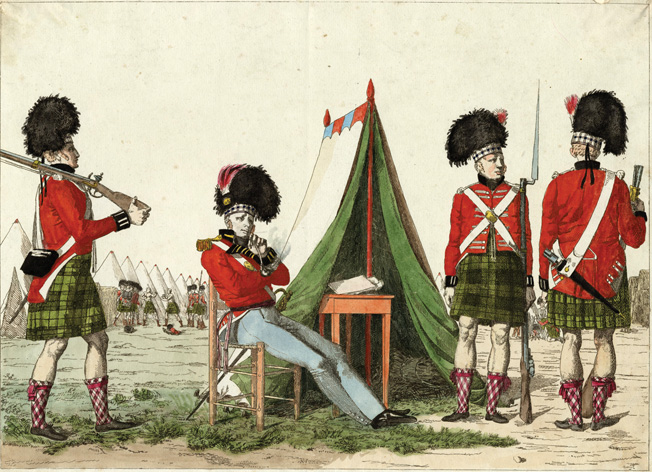
The “Fifteen,” as it was called, failed, but in 1745 Prince Charles Edward Stuart, son of the Old Pretender, landed in Scotland, raised his standard, and called out the Highland clans again. Not all responded to his summons, but for a few months Charles—later celebrated in song and legend as “Bonnie Prince Charlie”—enjoyed spectacular success. Skirling bagpipes and the wild “Highland charge,” with claymore swords glittering in the sun, became known and feared throughout England.
The 1745 rising ended in defeat on the wind-swept, boggy fields of Culloden, where the Highlanders were slaughtered by massed musketry and cannon fire. Medieval weapons could not stand up to modern guns, even when wielded with strength and courage. The very name “Highlander” became associated with rebellion and treason. For a time, even the Highlanders’ kilts and bagpipes were outlawed.
The Highlanders Fight For Britain
Six years before Bonnie Prince Charlie, a Scottish regiment was formed that would give Highland soldiers a place in the regular British establishment. The 43rd Regiment of Foot—later renumbered the 42nd Highlanders—would become the famous Black Watch. By contrast, the 92nd Foot (Gordon Highlanders) was raised by Alexander, Duke of Gordon, as a patriotic gesture in 1794. Great Britain was just beginning its long struggle with France, and regiments were being raised all over Britain. Gordon took his first recruits from his own estates at Badenoch, Lochaber, and Strathspey, with a good portion hailing from Aberdeen.
After a time, the duke was having trouble filling the ranks. The year before, many men from his estates had joined the Gordon Fencibles, and finding new recruits was not easy. But Jean, Duchess of Gordon, came to the rescue. A handsome woman, she also had several beautiful grown daughters. They traveled throughout Scotland, going to fairs where men were certain to gather. Bedecked in regimental coats and feathered headdresses, the bevy of aristocratic beauties offered the equivalent of one day’s pay and a kiss for men who came forward and enlisted. The Gordon Highlanders soon had 1,000 men in the ranks.
The 79th Regiment of Foot (Cameron Highlanders) was founded by Alan Cameron of Erracht in 1793. Originally, most of his men came from the area around Inverness, but as the war against Revolutionary France turned into the Napoleonic wars, Cameron took in lowlanders as well. All the regiments had to compromise because as the war went on there were the inevitable losses to battle and disease.
As the Napoleonic wars dragged on, more Highland regiments were raised, including the 78th Rosshire, 97th Strathspey, 98th (later 91st) Argyllshire, and the 93rd Sutherland Highlanders. In the early days, a Highlander joined a regiment in part to serve his clan chief. But with the inevitable dilution of real Highlanders in the ranks, bounties were offered to attract recruits. As a result, Highland regiments had not only Highlanders but lowlanders, English, Welsh, and even Irish members. Some regiments had a higher proportion of real Highlanders than others, but the main qualification was that a man act like a Highlander—brave, loyal, and resourceful in battle. Those attributes would serve them well in the coming days.
“Napoleon Has Humbugged Me, by God!”
Ahead of Wellington’s army lay Quatre Bras, a small but strategically located hamlet where two major roads crossed, the Charleroi-Brussels and Nivelles-Sombreffe thoroughfares. The intersection gave the village its name. (Quatre Bras means “four arms” in French.) A few hours earlier, Wellington had issued orders for the army to concentrate there. Much depended on his Prussian allies under Field Marshal Gebhard von Blucher, who were operating farther to the east. Wellington was anything but confident of Blucher’s abilities. “We shall not stop him there,” said Wellington of Napoleon, “and if so, we’ll fight him here.” The duke put his thumb on a map position marked “Waterloo.”
Napoleon’s plan for the 1815 campaign showed that he had lost none of his strategic brilliance. He concentrated his Armee du Nord, around 123,000 men, on the Franco-Belgian border just south of the junction point of Wellington’s Anglo-Allied army and Blucher’s Army of the Lower Rhine. If all went well, the French would smash through the thin screen of pickets and drive a wedge between the two Allied armies before they could unite. It was in keeping with Napoleon’s celebrated catchphrase, “Toujours l’audace [Audacity always].”
Once he gained momentum, Napoleon hoped to defeat Wellington or Blucher—his plan was still flexible—before pouncing on whichever one remained. Wellington was slow at first to realize what the French were doing. The duke was worried about his right flank and the line of communications that stretched to the seacoast and ultimately back to Britain. He was so concerned, in fact, that he had left 17,000 men at Hal to guard against a French move in that area.
But Wellington quickly took stock of the situation. “Napoleon has humbugged me, by God!” he exclaimed when the facts became clear. “He gained 24 hours’ march on me!” That was why Picton’s 5th Division, which included the Highland regiments, found itself trudging south toward Quatre Bras. Wellington’s reputation, not Allied numbers, maintained a tenuous hold on Quatre Bras. The crossroads was held by 7,000 Dutch-Belgian troops under the local command of General Prince Bernard of Saxe-Weimar. They were opposed by the French army’s left wing under the celebrated Marshal Michel Ney, Napoleon’s “Bravest of the Brave.” Ney’s spearhead was the II Corps under General Honore Reille: 19,000 men, 3,500 cavalry, and 64 guns. General Jean Drouet, Count d’Erlon, and the I Corps were coming up from behind, adding another 20,000 men to the total.
The Battle of Quatre Bras
Ney received orders from Napoleon to occupy the crossroads and prepare to push on to Brussels. Since there was nothing in the missive to indicate urgency, the marshal let his men cook and eat breakfast first. But there was more to it than that. Ney’s usually fiery disposition was dampened by caution. There were thick woods in the area, leafy screens that easily could hide enemy troops. Fields of corn and rye stood almost as tall as a man, perfect for concealment.
Besides crops and trees, there was also a ridge behind the Nivelle road that would be perfect for a Wellington-style defense position. The Iron Duke was known to place his troops behind reverse slopes, in part to shield against French artillery fire. In the end, Ney decided to wait until more troops could come up, a decision that was seconded by Reille. The experienced Reille, who had fought in the Peninsular War, agreed that it might be a battle, as in Spain, where Wellington would conceal many of his troops until the last moment.
Because of Ney’s excessive caution, the French lost a golden opportunity. The Battle of Quatre Bras began around 2 pm, and throughout the sweltering afternoon more and more Allied units entered the fray. After a time, Wellington arrived to take command, fresh from a conference with Blucher.
The Highlanders Join the Battle
Private Dixon Vallance of the 79th “Cameron” Highlanders was one of the sturdy Celts who made the march from Brussels to Quatre Bras, some 20 miles away. The Highlanders were in fine fettle, but the weather turned hot by midday. Once a brief halt was called, Vallance took out his spare shirts—washed that morning but still wet—and placed them on the ground to dry. He then took the time to read a few Bible verses. The weary march resumed, but the pace—and Vallance’s pulse—quickened at the distant sounds of battle.
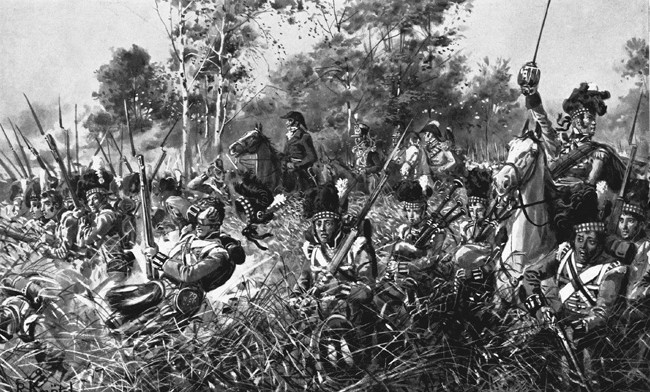
The 79th was part of the 8th Brigade, commanded by General Sir James Kempt. The brigade consisted of the 28th Foot, 32nd Foot, and six companies of the green-jacketed 95th Rifles. General Sir Denis Pack headed the 9th Brigade, which included the 1st Foot (Royal Scots), 44th Foot, and two Highland regiments—the 42nd (Black Watch) and 92nd (Gordons). The battle was confusing, the situation extremely fluid. The French probed all along the Allied line, seeking a weakness to exploit. Ney seemed on the verge of a breakthrough several times only to have his hopes dashed by the arrival of fresh British troops like the Highlanders.
Private Vallance and his comrades soon found themselves under heavy French fire. Cannonballs plowed through the rye and musket balls peppered the 79th’s ranks. At one point the fire was so heavy that the regiment was ordered to lie down in the trampled rye, a move designed to minimize casualties. The 79th hunkered down, but the hail of lead and iron was still intense. A French musket ball embedded itself in Vallance’s knapsack, and another cut his belt as it streaked by. Yet, the young Scotsman was fortunate; a nearby companion was hit in the forehead and killed instantly. When French infantry approached, the 79th rose as one and delivered volley after volley into the packed blue ranks. Vallance recalled, “My face, hands, and clothes and belts were bespattered with the blood of my killed and wounded companions.”
Not far away, the 42nd Highlanders also joined the battle, bagpipes sounding over the roar of cannon and musketry. The 42nd’s progress was impeded by the tall stalks of rye that grew over five feet tall. Blinded by the stalks, they could hear the sounds of battle but could not tell where the enemy might be. The swaying rye was up to the tops of the men’s bonnets. The average Highlander was muscular and compact, but not very big. The average height for a 92nd Highlander, for example, was 5 feet 6 inches tall—and some were shorter.
The sweating Black Watch managed to trample down most of the rye and found themselves on the edge of an uncultivated field. There a terrible drama played out before their eyes. Allied Belgian soldiers were on the run, pursued by French infantry. The Belgians sought safety wherever they could find it, even worming their way through the Black Watch’s kilted ranks. The French infantry, startled at the sudden emergence of Highlanders from behind a wall of rye, paused and withdrew. The Brunswick Hussars had moved forward to pursue the French only to be decimated by French volleys when they caught up with their prey. A few minutes earlier on another part of the field, gallant Frederick William, Duke of Brunswick, had been mortally wounded while trying to rally his troops.
Lancers Strike the Black Watch
The Brunswick Hussars flew past the 42nd, which was deployed in line. To many Highlanders the cavalry was just a black-clad blur of falling hooves and tall shakoes. As the mass of riders thundered past the Black Watch, the terrible truth dawned: many of the horsemen were not Brunswickers, but French lancers from General Honore Pire’s 2nd Cavalry Division, men of the 5th and 6th Chevaux-Legers-Lanciers.
Sensing an opportunity, the French lancers broke off their pursuit of the hapless Brunswickers and swung around to hit the Black Watch while it was still in line. The 42nd began to form squares, but the lancers hit the regiment before the two flank companies could close the four-rank defensive box. For several breathless moments all was chaos, with numbers of lancers penetrating the embryonic square. Lances thrust into red-jacketed bodies, but the Highlanders responded with bullets and bayonets. Horses reared and plunged and muskets flared with flame and acrid powder smoke.
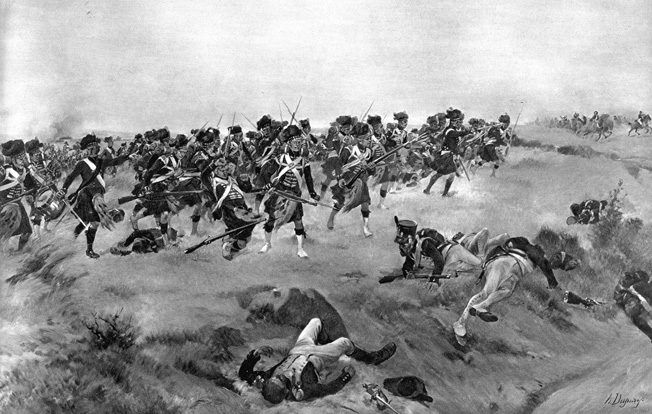
Colonel Sir Robert Macara, commander of the 42nd, was killed when a lance thrust punctured his chin and drove into his brain. Lieutenant Colonel Robert Dick assumed command, but his tenure was brief. Within a few minutes he was wounded in the hip and arm and forced to relinquish command to Brevet Major George Davidson. Davidson, in turn, was mortally wounded at the end of the day.
The Black Watch was severely mauled but managed to close the square and repel the French cavalry attack with well-aimed volleys that emptied many saddles. The Scots made short work of the lancers who still remained in their square, but by then the regiment had suffered severely, with the 42nd losing about half its effective fighting strength at Quatre Bras. The Black Watch had begun the day with a little over 600 officers and men; by nightfall, there were 338 survivors. The French lancers, aided by muskets and cannons had proven to be formidable foes.
Taking Cover in a Ditch
On another part of the field, the 92nd Gordon Highlanders also found themselves in the thick of the fighting. They had the misfortune of being near the actual crossroads, with their right resting at the hamlet of Quatre Bras, where they were subjected to a heavy cannonade by well-served French artillery. Wellington and his staff dismounted and placed themselves a few yards to the regiment’s left. A 92nd officer recalled how cool the duke was under fire, calmly surveying the scene and issuing orders as cannonballs plowed the ground nearby. In fact, Wellington’s presence was a mixed blessing as the French gunners plainly saw the British commander in chief and threw repeated rounds into their ranks in an effort to take him out.
The French artillery fire made the position uncomfortable, but the Camerons still were able to find humor in their predicament. One hurtling cannonball knocked off a private’s plumed bonnet. The now bareheaded Highlander seemed unhurt, although he had probably sustained a concussion. It was said that he had a wild look and that his brains were addled for a day or two after the incident. Finally, the cannon fire grew so heavy that Wellington ordered the 92nd to seek shelter in a ditch and behind an embankment by the road. The battle-savvy duke knew the difference between being brave and being foolhardy—he and his staff took shelter in the same ditch.
The 92nd as relatively safe from cannonballs, but shells were another matter. When one shell landed among the troops, fuse glowing, an officer in the regiment recalled dryly, “A ludicrous scramble took place for the honor of being undermost in the ditch.” Soon some French cuirassiers appeared on the scene, giving the Highlanders something else to think about. Wellington took command, and as the regiment rose to its feet he shouted, “Ninety-second, don’t fire until I tell you!” When he gave the command, a well-aimed volley sent the armored horsemen packing. More British units were arriving, and the Camerons welcomed them with rousing cheers. But the French were pressing hard, with two infantry columns approaching from the Charleroi road and the Bossu wood.
“Cameron’s Gathering”
About 200 yards from Quatre Bras, there was a two-story house beside the Nivelles road. In the rear was a hedge that ran into a field. Not far from the 92nd’s ditch there was also a garden surrounded by a thick hedge. The French soldiers occupied the house, garden, and hedge area and poured a deadly rain of musket lead into the British position. “Now, Ninety-second,” Wellington ordered, “you must charge these two columns of infantry!” The Highlanders leapt over the ditch and ran toward the enemy positions, led by their intrepid colonel, John Cameron of Fassiefern. French fire was so heavy that the regimental color-bearer was shot through the heart and the flagstaff was shattered in six pieces by three musket balls.
As the Highlanders neared the two-story house, Cameron was struck in the groin by a musket ball fired from the second floor. Badly wounded, he lost control of his mount and pitched headlong onto the ground. The sight of their stricken commander enraged the Camerons, and once their blood was up nothing could stop them. The Highlanders took the house, seeking immediate and violent revenge for their fallen commander with bayonets and musket butts. When some nearby French soldiers refused to budge, the 92nd broke into a full-fledged bayonet charge, their progress marked by pipers playing their battle song, “Cameron’s Gathering,” over the din of battle. The blue-clad Frenchmen gave way, pursued by the Scotsmen for a full half-mile before finally being permitted to make good their escape.
The Battle of Quatre Bras was so fluid that no one knew who was winning the contest. Allied deserters, camp followers, and wounded straggled away from the battlefield, spreading defeatist rumors that grew more exaggerated with every passing mile. Captain Cavalie Mercer of G Troop, Royal Horse Artillery, was hurrying down the road to battle when he encountered some Belgian wounded. He was disgusted to note that each genuine casualty had “ten or even more attendants”—men who had obviously lost all stomach for the fight. “Monsieur!” they cried, “tout est perdu! [All is lost!].” Mercer refused to believe it. A wounded Highlander from the 92nd appeared, limping badly from a knee wound. The captain asked him if Wellington had been defeated, as these stragglers insisted. “Na, na, Sir,” the Scot reported. “It’s a damned lee [lie]!” Mercer chose to believe the Scotsman over the Belgians.
Prelude to Waterloo
The fighting ended by around 9 pm. The Battle of Quatre Bras was technically a draw, but a defeat in terms of Napoleon’s overall strategy. The crossroads had not been taken, and Wellington had merely been checked, not defeated. Some eight miles away, Napoleon had won a major but not decisive victory at Ligny over Blucher’s Prussians. And because of a series of mistakes, miscalculations, and confusing orders, General Jean Baptiste Drouet of d’Erlon’s I Corps had marched back and forth between Ligny and Quatre Bras most of the day without even firing a shot.
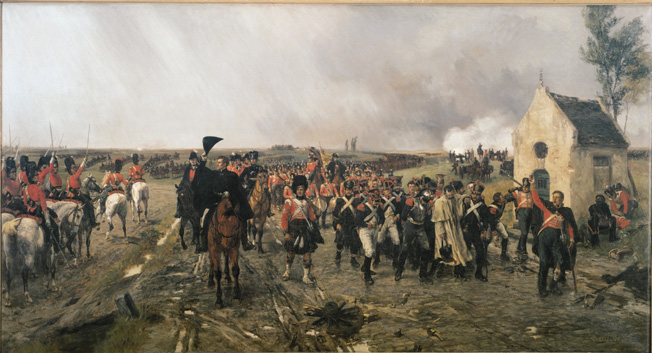
The next morning, June 17, both the Anglo-Allied army and its French counterpart rose, ate breakfast, and licked their wounds. The Highlanders had been decimated, but they were in good spirits because they knew they had performed well. When issued a ration of beef, the Scotsmen improvised by using French cuirassier breastplates as cooking pots. Private Vallance remembered with typical soldier’s humor, “They suited our purpose well, only we lost a little of the gravy by the holes that our bullets had made.” When some Belgians saw the Highlanders cooking steaks in the breastplates, they thought—given the Highlanders’ fierce reputation—that the Scots were grilling pieces of dead Frenchmen.
When Wellington realized Blucher had been defeated, he ordered his army to fall back a few miles to a defensive position along the ridge of Mount Saint Jean. It was here that the Battle of Waterloo was going to be fought. Napoleon, who had rigorously pursued Wellington, was confident he would win a decisive victory against the hated British.
Under Fire From the Grand Battery
The night of June 17-18, the heavens opened up, impartially drenching all soldiers in a torrential downpour. Fires were lit, but for most troops it was a miserable night. The rain was cursed by the shivering British soldiers, but in the end it proved a blessing in disguise. The precipitation had turned the ground into a sea of mud. Napoleon’s cannons—his vaunted “petite belles”—would be hard to maneuver in the soupy muck. And once the artillery did begin to fire, cannonballs would become stuck in the viscous ground and shells would fail to detonate when their fuses were extinguished.
Picton’s 5th Division, which included the Highlanders of the 8th and 9th Brigades, was sheltering behind the reverse slope of the ridge that fronted the Anglo-Allied position. A road that ran along the ridge was locally called the Chemin d’Ohain. The edge of the road was lined by thick, thorny hedges, and in a few spots the Chemin d’Ohain actually sank below the ridge line in a few places. Virtually all of Picton’s division was hidden behind the ridge’s reverse slope.
The space between was occupied by General W.F. Count van Bijlandt’s brigade from the 2nd Netherlands Infantry Division. These were green troops, about half of them militia, although they had given a good account of themselves at Quatre Bras. For some reason, Bijlandt’s luckless men had been placed on the forward slope of the ridge, which exposed them to the full fury of Napoleon’s artillery. Through no fault of their own they became the weak link. If they fell back or were overwhelmed, there would be a large, potentially fatal gap in Wellington’s defensive line.
By late morning Napoleon had assembled a “Grand Battery” of 80 guns whose main mission was to soften up the Allied line in preparation for French infantry attacks. It was a formidable array, including mammoth 12-pounders and 40 8-pounders belonging to d’Erlon’s I Corps. The bombardment commenced shortly after noon with a deafening roar that could be heard for miles. In the end it was all sound and fury—signifying nothing. The terrible noise might have frightened some young Allied soldiers or encouraged some French ones, but the bombardment failed in practical terms. Wellington’s wise use of reverse slopes, coupled with the muddy ground, effectively neutralized the Grand Battery.
“Vive l’Empereur”
About 1:30 in the afternoon, d’Erlon’s I Corps was ordered to begin the main assault against Wellington’s line. There would be four divisions, three of them massed in tightly packed, phalanx-like columns. Each battalion would have about 200 men in the front rank, with the battalions stacked up, one after another, to a depth of between 24 and 27 ranks. The I Corps first marched in files, snaking its way through the jumble of artillery horse teams, caissons, limbers, and wagons that were part of the Grand Battery. When the gun line itself was reached, the battery ceased fire. Once the corps got out into relatively open land fronting the French artillery, the men sorted themselves out and formed into their attack columns.
Ney and d’Erlon rode ahead of the columns accompanied by their staffs. The French soldiers were in fine fettle, cheerful and hungry for action. Drummer boys clutched drumsticks, beating a lively tattoo, their martial music punctuated by shouts of “En avant!” and “Vive l’empereur!” French officers promised that the emperor would reward those who advanced first.
The four columns advanced in a staggered fashion, with some columns a few minutes ahead of others. Joachim Quiot’s 1st Infantry Division stepped off to the attack. Then, in succession, came General François-Xavier Donzelot’s 2nd Division, General Pierre-Louis Marcognet’s 3rd Division, and General Joseph-Francois Durutte’s 4th Division. The massive columns lumbered forward, trampling bountiful fields full of rich crops. In some cases, the soldiers’ shoes were pulled off by the clinging mud’s powerful grasp.
Bijlandt’s brigade had been exposed to the full fury of Napoleon’s Grand Battery and suffered accordingly. When Donzelot’s division appeared, a solid wall of blue and white coming through the artificial clouds of powder smoke, Bijlandt’s men held firm, trading volleys with the French column at close range—so close that when a Belgian officer was wounded by a musket ball in the arm the paper wad from the cartridge paper was left smoking in his sleeve. Eventually, it was more than the young, inexperienced soldiers could stand. They broke and headed for the rear, although one unit, the 7th Belgian Line, stubbornly held its ground. Nevertheless, a large and exploitable gap had been torn in Wellington’s line.
“Scotland Forever!”
The 42nd Highlanders had originally been sheltering behind the hedge that bordered the Chemin d’Ohain. They rose and advanced to the hedge but would not go through it. One Highlander explained that they were hesitant to plunge into the thorny hedge because they were barelegged under their kilts. Marcognet’s column was in the process of crossing the Chemin d’Ohain when the Frenchmen realized they were only a few yards from the Highlanders. They began to deploy but were hit by a hail of lead from the Black Watch. The column staggered but recovered and unleashed a volley that momentarily disordered the 42nd. It was much the same for the nearby 92nd Highlanders. The Gordons leveled their muskets and fired when Marcognet’s men were only about 30 feet away. The lead ranks were shredded, but the French recovered and replied with their own volleys.
Picton, commanding the British 5th Division, personally witnessed the carnage. Rough and foul-mouthed, the eccentric general was dressed in ordinary civilian clothes and a top hat. He was ordering a Scottish bayonet charge when he was hit in the head and killed by a French bullet that passed right through his top hat.
It seemed as if Napoleon’s columns, already on the crest of the ridge, were about to achieve a great breakthrough. Most of Bijlandt’s brigade had fallen back, and even Kempt’s and Pack’s sturdy Highlanders were wavering. But at precisely the right moment, General Henry Paget, Lord Uxbridge, ordered the Allied cavalry to mount a charge—one of the most famous and iconic charges in British history. The Union Brigade, taking part in the celebrated advance, included units from different areas of the British Isles. There were the 1st Royal Dragoons (English), 6th Inniskilling Dragoons (Irish), and the 2nd North British Dragoons (Scots Greys). The regiments had to pass through their own infantry, advance up the muddy reverse slope, break through or jump the thorny hedges, and cross a sunken road. Under the circumstances, a brisk trot was about as fast as most could manage. The Scots Greys actually walked their horses into combat.
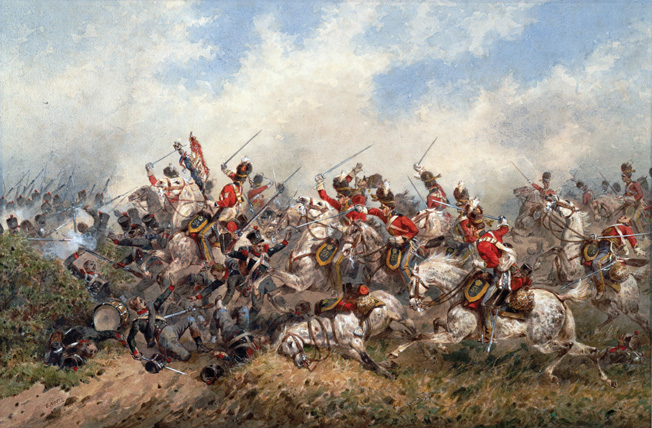
The pleasure of seeing their countrymen advancing on horseback was too much for the 92nd Gordons. Some Highlanders joined the attack by grabbing the stirrups of the Scots Greys troopers, the cry of “Scotland Forever!” on their lips. All along the line the Union Brigade sabered French soldiers almost at will. Some enemy soldiers surrendered, while others turned tail and fled—only to collide with files who were trying to advance. Between 2,000 and 3,000 of d’Erlon’s men were taken prisoner. Sergeant Charles Erwart of the Greys captured the eagle standard of the 45th of the Line. It was one of only two taken at Waterloo. The cavalry, always impetuous, attacked the Grand Battery. In the end, French cavalry counterattacks destroyed them as a fighting force.
The Highlanders of the 42nd and 92nd Regiments went forward, bayonets leveled at the fleeing enemy. The Black Watch still mourned their colonel, and the mood was one of revenge, not mercy. “Where’s Macara?” the kilted warriors shouted as their bayonets thrust into Frenchmen who had thrown away their weapons and tried to surrender.
The 92nd (Gordons) also had their blood up, but their fury was tempered by humanity. French infantrymen, some of them wounded, yelled “Prisoner!” or “Quarter!” when they saw the feather-bonneted Celts approach. “Well,” one Highlander was heard to say, “Go to the rear, damn ye!”
The Squares of Waterloo
It was now about 3:30 in the afternoon, and there was a brief lull in the battle, although the French cannons started firing again. Marshal Michel Ney, the celebrated “Bravest of the Brave,” was to all intents and purposes the tactical commander at Waterloo. Napoleon, obese and ill, was largely passive through much of the day. When Wellington drew back some of his troops to better defensive positions, Ney mistook the movement as a general retreat.
Hoping to turn this “retreat” into a rout, Ney ordered a cavalry attack. General Count Edouard Milhaud’s IV Reserve Cavalry Corps would spearhead his assault, eight regiments of armored cuirassiers, around 3,000 men in all. Milhaud thought it was madness because the Allied infantry was unbroken, and there would be no French infantry support. Nevertheless, orders were orders, so Milhaud asked for additional support, which was supplied in the form of light cavalry chasseurs a cheval and lancers. Altogether nearly 4,000 horsemen formed up and advanced to the sound of brassy cavalry trumpets and thundering hooves.
The Anglo-Allied army formed squares, the standard infantry defense against cavalry of the period. In each square two ranks knelt, presenting their bayonet-tipped muskets outwardly in a kind of hedgehog formation. Two other ranks stood close behind, ready to pour a steady stream of hot lead into the French ranks. The Highland regiments followed the same pattern, the bare knees of the first ranks sinking deep into the glutinous mud.
The cuirassier advance was a magnificent spectacle, a tidal wave of steel and horseflesh that impressed even the oldest veteran. Private Vallance later recalled, “They made furious attacks on us, but were often repulsed by our impregnable barrier of British steel.” Impeded by mud and a natural instinct to avoid the bayonet ramparts that circled the squares, the French horses would not charge home.
Discipline Under Artillery Fire
Determined Scots volleys emptied many saddles, and the French cavalry reluctantly withdrew. Yet this was only the first of many great cavalry charges that took place that bloody afternoon—so many that even eyewitnesses don’t agree on their number. But between cavalry attacks French artillery—some of it unlimbered horse artillery—tore into the British squares with savage impunity.
Round shot plowed into packed Highland ranks, and shells exploded all around. Some men were decapitated, while others were horribly eviscerated, or lost an arm or leg. Earlier that day, young and inexperienced Highlanders were shivering with the cold; frissons of fear coursed through their bodies. Regiments like the 79th Foot had fought well since Quatre Bras, but there is a limit to human endurance, even among sturdy Celts.
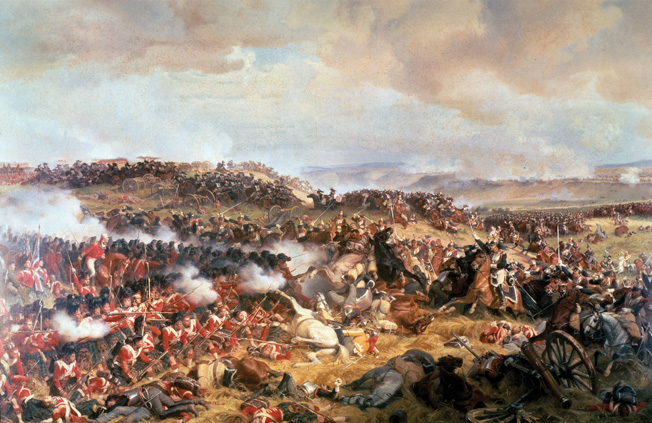
It was clear the 79th was wavering and very near the end of its tether. Piper Kenneth MacKay decided that the regiment needed something to bolster its courage, so he stepped up and out. Mackay deliberately left the square and began playing “Cogathd na Sithd” (“War or Peace”) on his bagpipes. As his pipes sounded, Mackay proudly marched around the square, refusing to take cover even when the French cavalry attacked. The classic Gaelic tune struck a responsive chord with the men of the 79th, and the piper’s obvious contempt for death renewed their own courage. Piper MacKay stayed outside the square the rest of the day, yet emerged that evening completely unscathed.
The 92nd Gordons were ordered to move to the center of Wellington’s line, to a position just left of the main road and not far from the gravel pit near La Haye Sainte farmhouse. The French had taken La Haye Sainte, and now the Anglo-Allied line was in jeopardy. With the center almost fatally weakened, Wellington needed every man to prevent Napoleon from achieving a breakthrough.
As the Gordons marched in column, a shell fell into their midst. Without orders, the ranks just behind the sputtering shell reversed direction, walked out of range, and then paused until the missile detonated. They then rejoined the rest of the column. It was an example of how disciplined the Highlanders were even after the severe strains of battle.
Final Defeat of Napoleon Bonaparte
By early evening Napoleon was ready for his last throw of the dice, ordering his legendary Imperial Guard grenadiers and chasseurs to advance on Wellington’s position. The Guard went forward with its usual élan, but its progress was blunted by steady British volleys. It was around this time that Sergeant David Robertson of the 92nd Highlanders was told by a Scottish skirmisher that “something extraordinary” was going on in the enemy ranks.
Robertson trained a telescope on the French lines—only to see what appeared to be two groups of blue-clad troops firing at each other. Did part of the French army mutiny? Just then, an aide-de-camp galloped up with welcome news—those “mutineers” were actually Prussians. Marshal Blucher had finally arrived in force.
Dirty and disheveled, numb with battle fatigue and general weariness, Robertson could scarcely believe his ears. He later commented, “Never was reprieve more welcomed to a death-doomed criminal.” Probably most of Wellington’s troops would have echoed his sentiments. This was more than a reprieve—it was victory.
Wellington waved his hat, a signal for a general advance. The Anglo-Allied army went forward, including what remained of the Scots in the 5th Division. Private Vallance, so lucky through most of the campaign, was hit by a musket ball in the cheek, a wound that also tore out his right eye. Stunned and in great pain, he fell to the ground.
After a long night on the corpse-strewn field, the young Scot finally received first aid. He survived and was discharged in 1816 with a pension of nine pence a day. Individual soldiers like Vallance soon faded into obscurity, but as the years passed the overall Scots contribution to the Waterloo campaign was well remembered in histories and commemorated in art. It is a story that still resonates today.

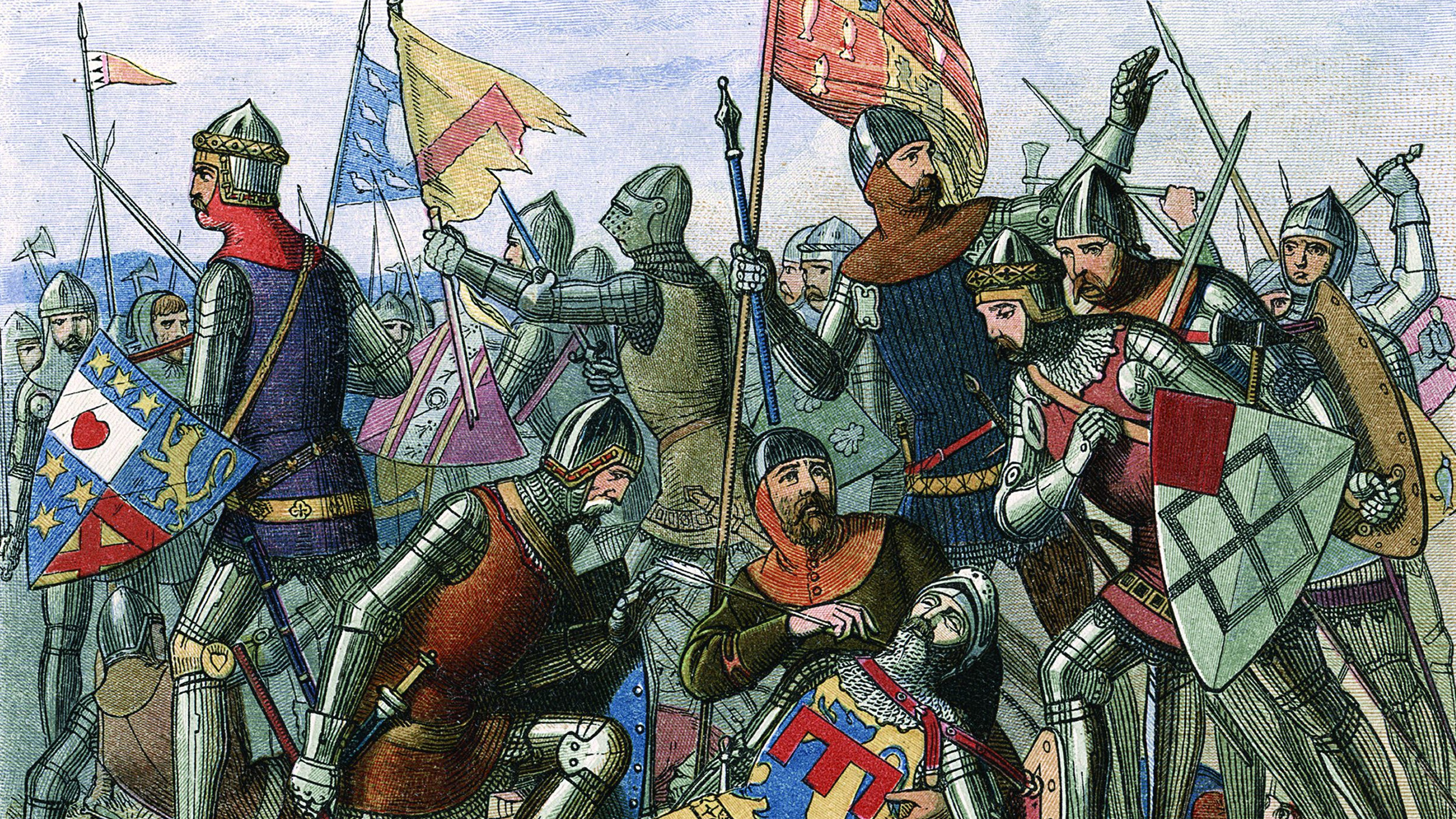
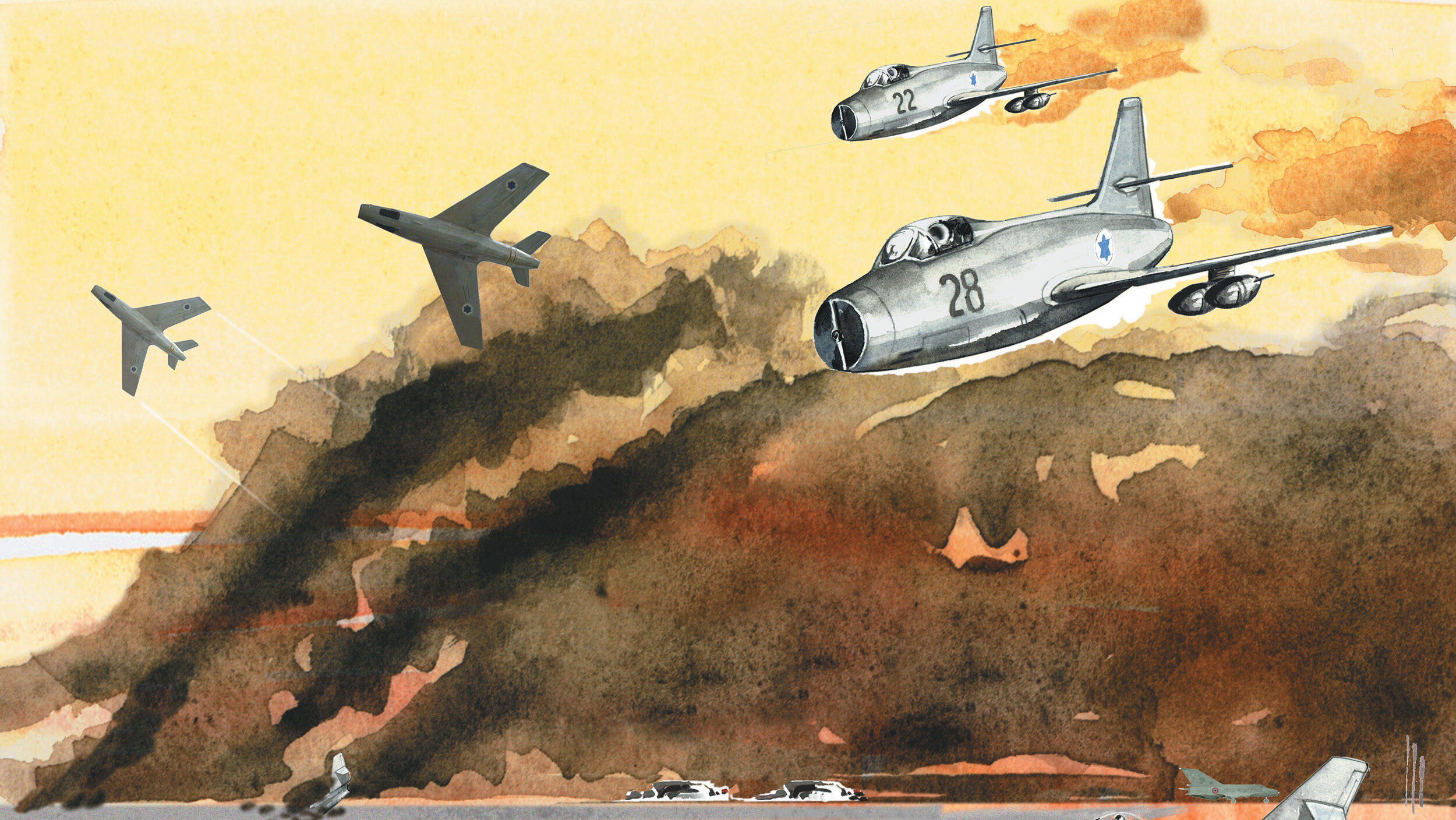
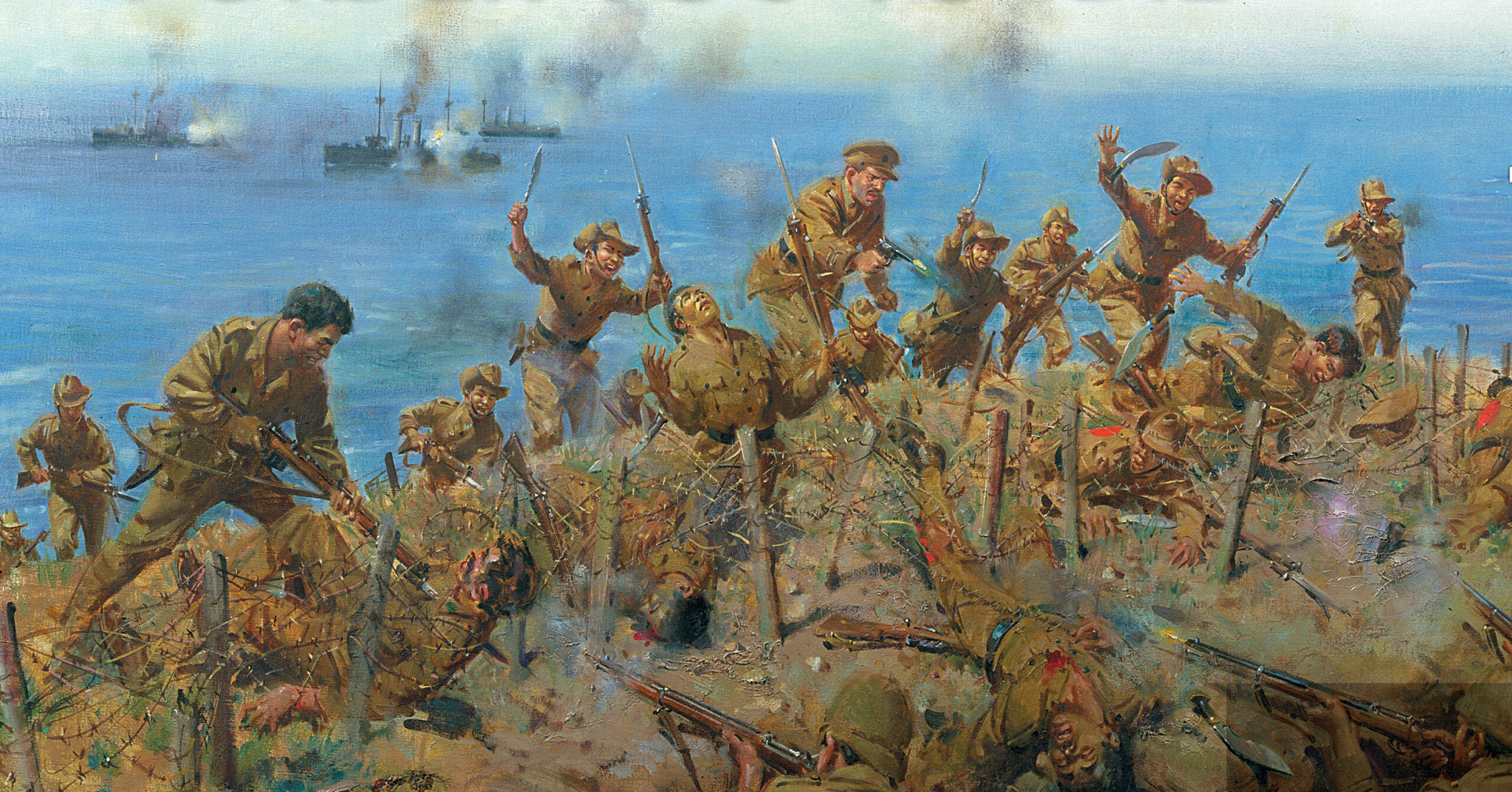
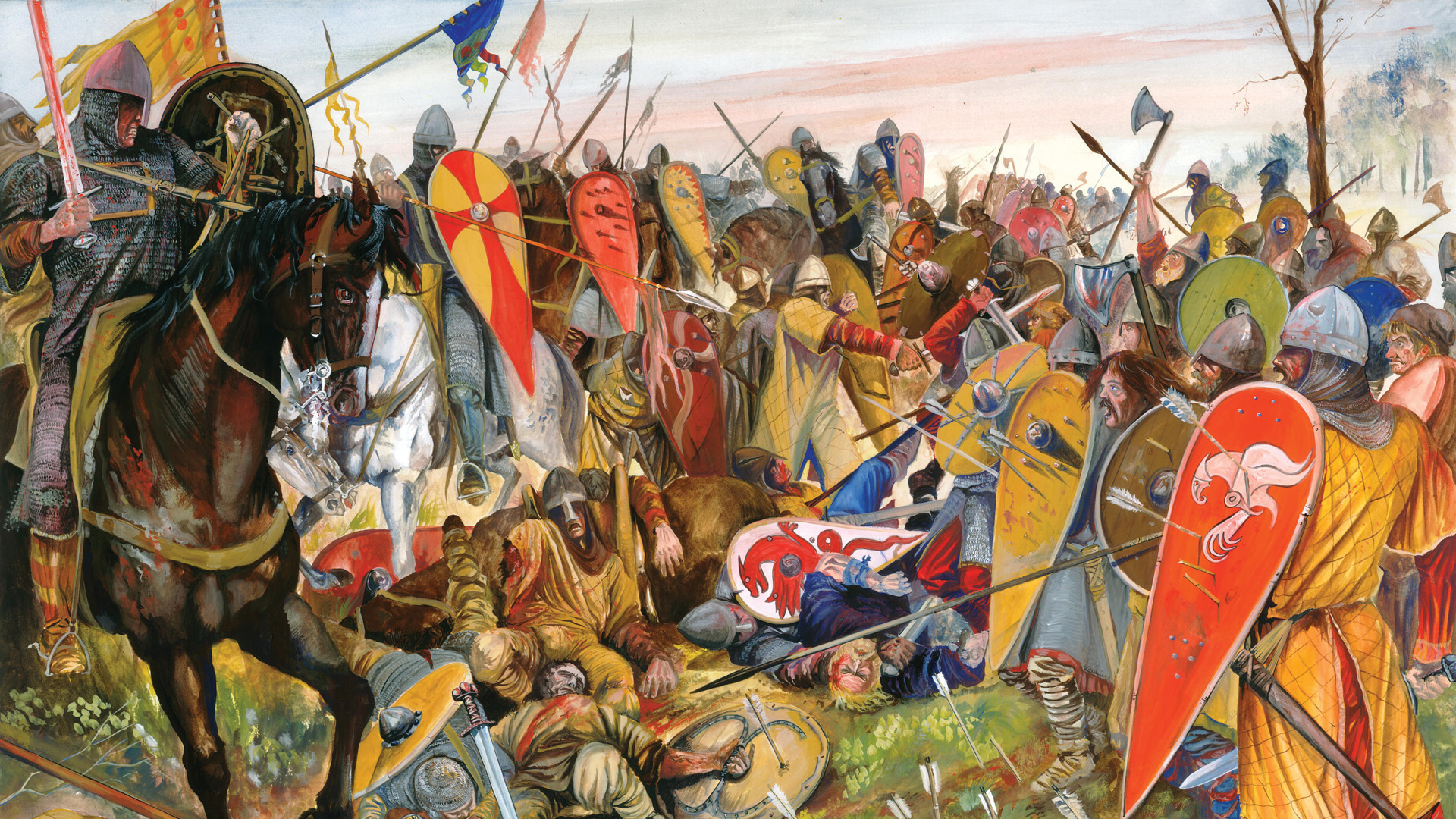
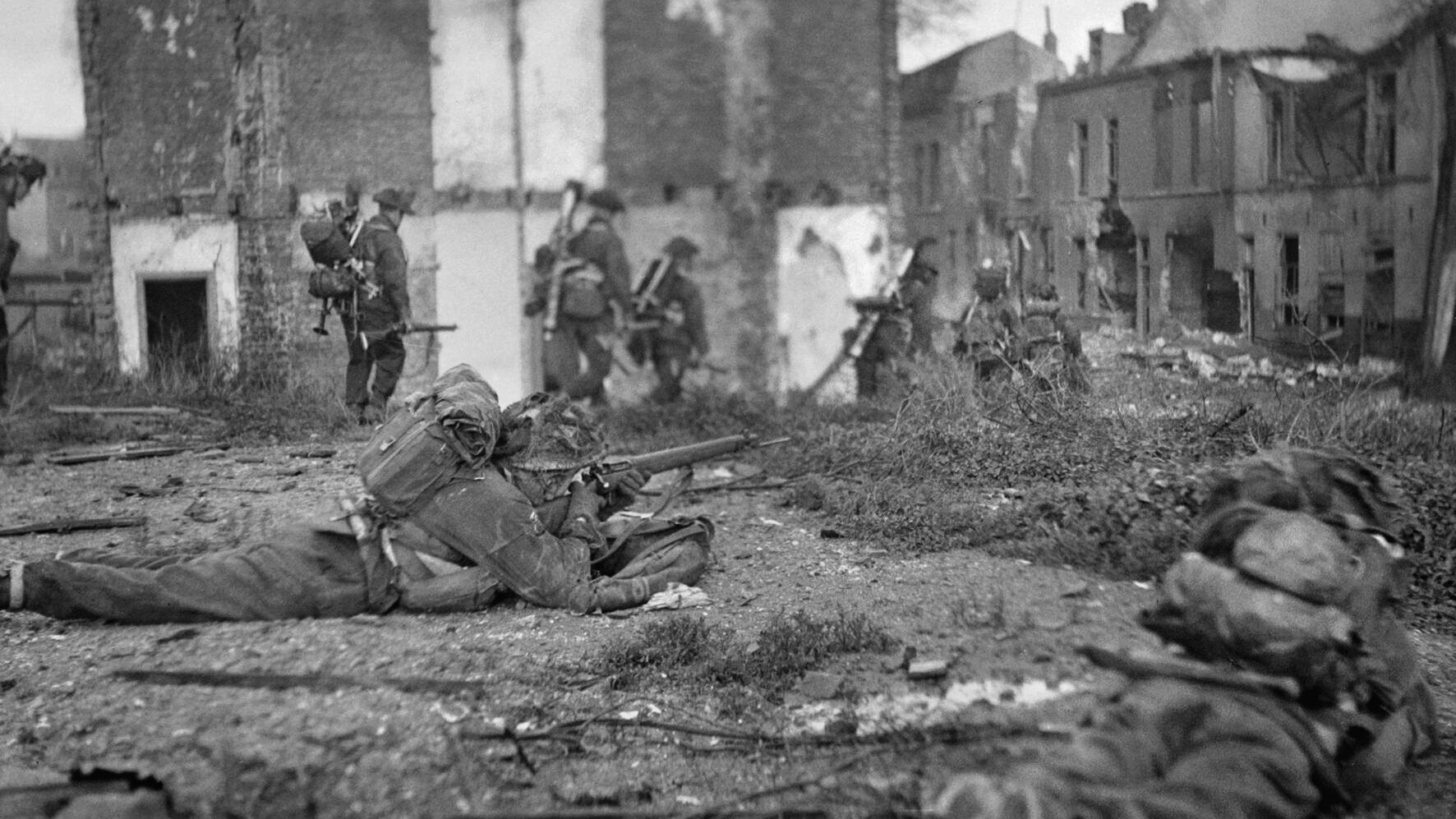
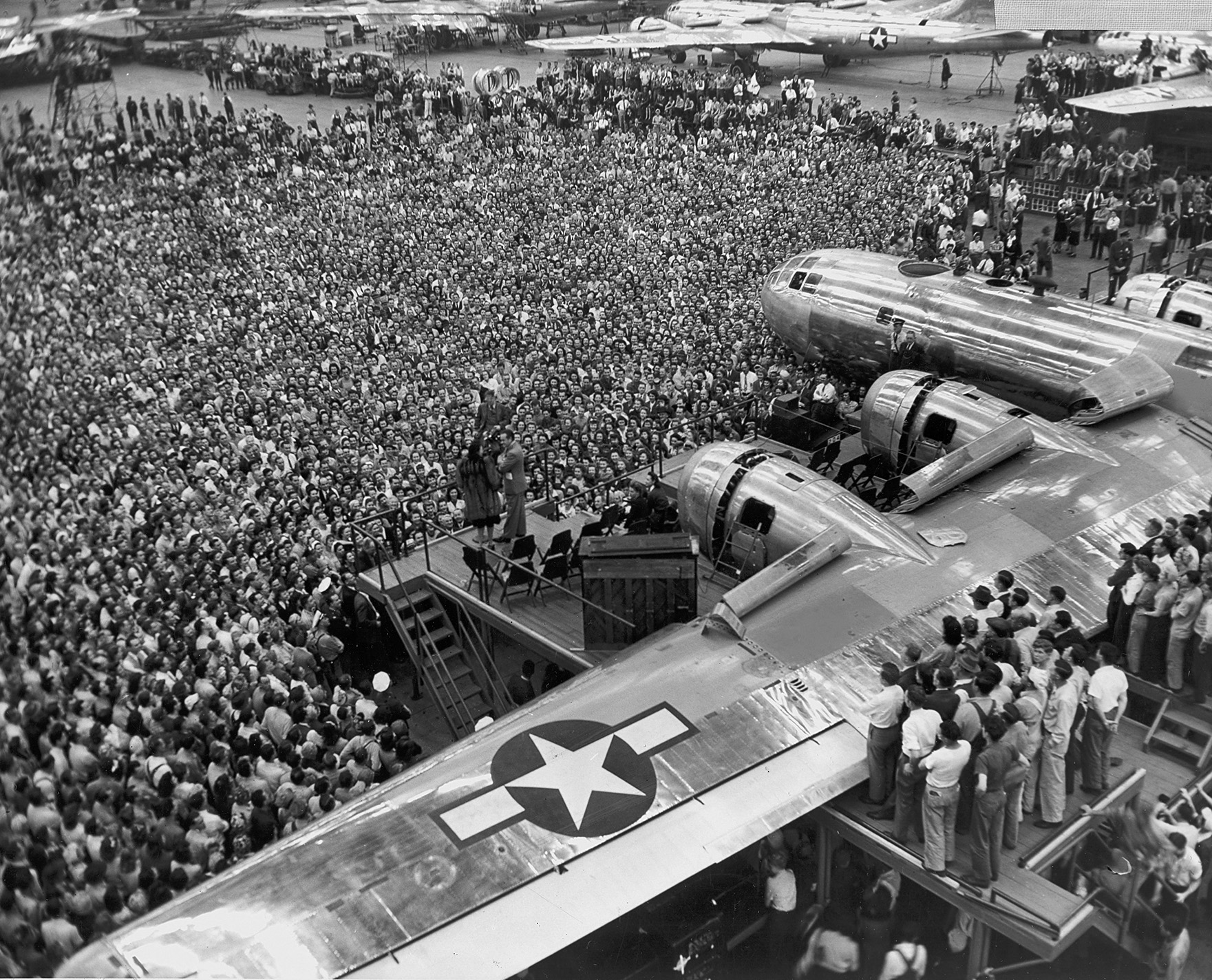
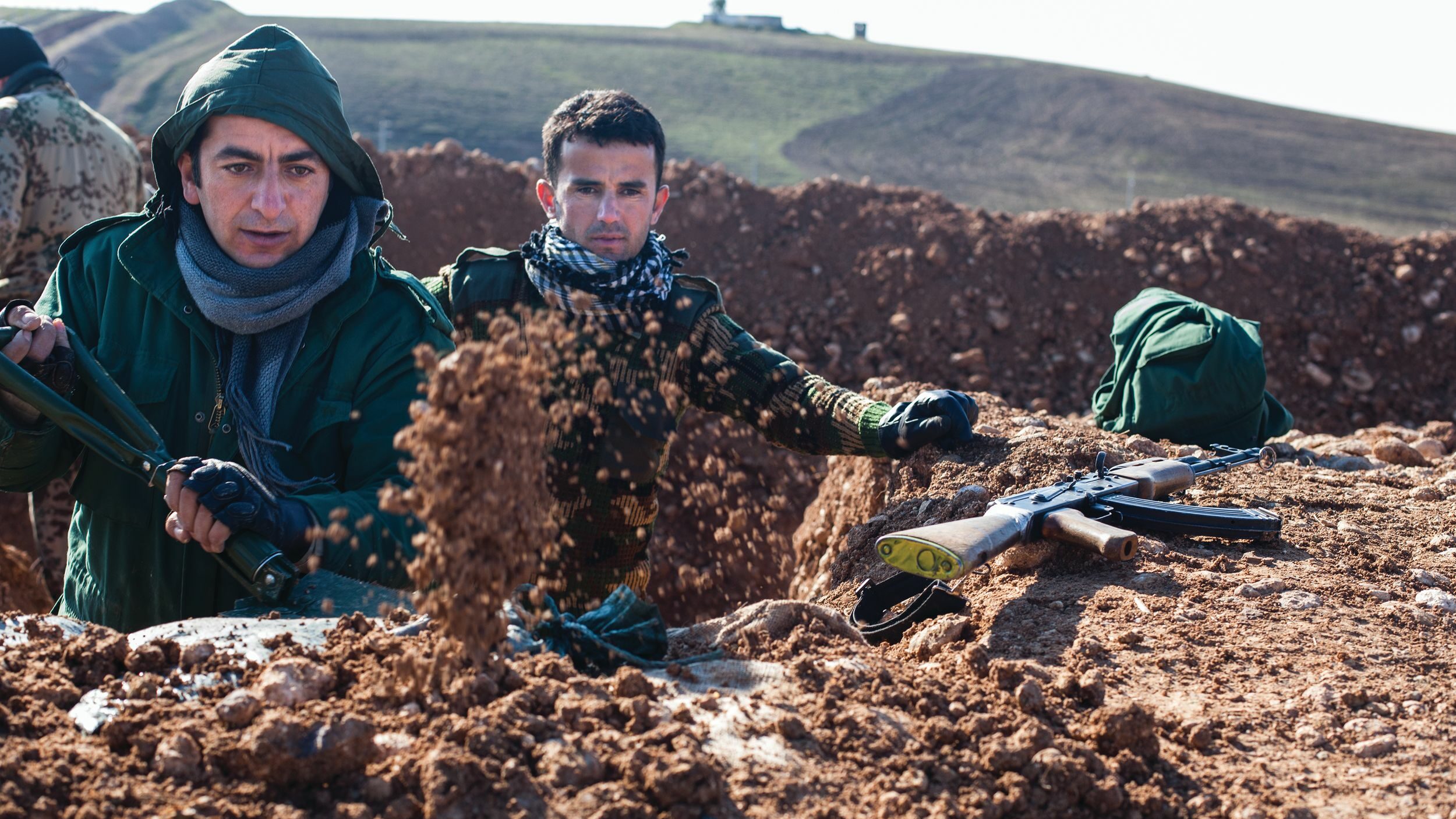
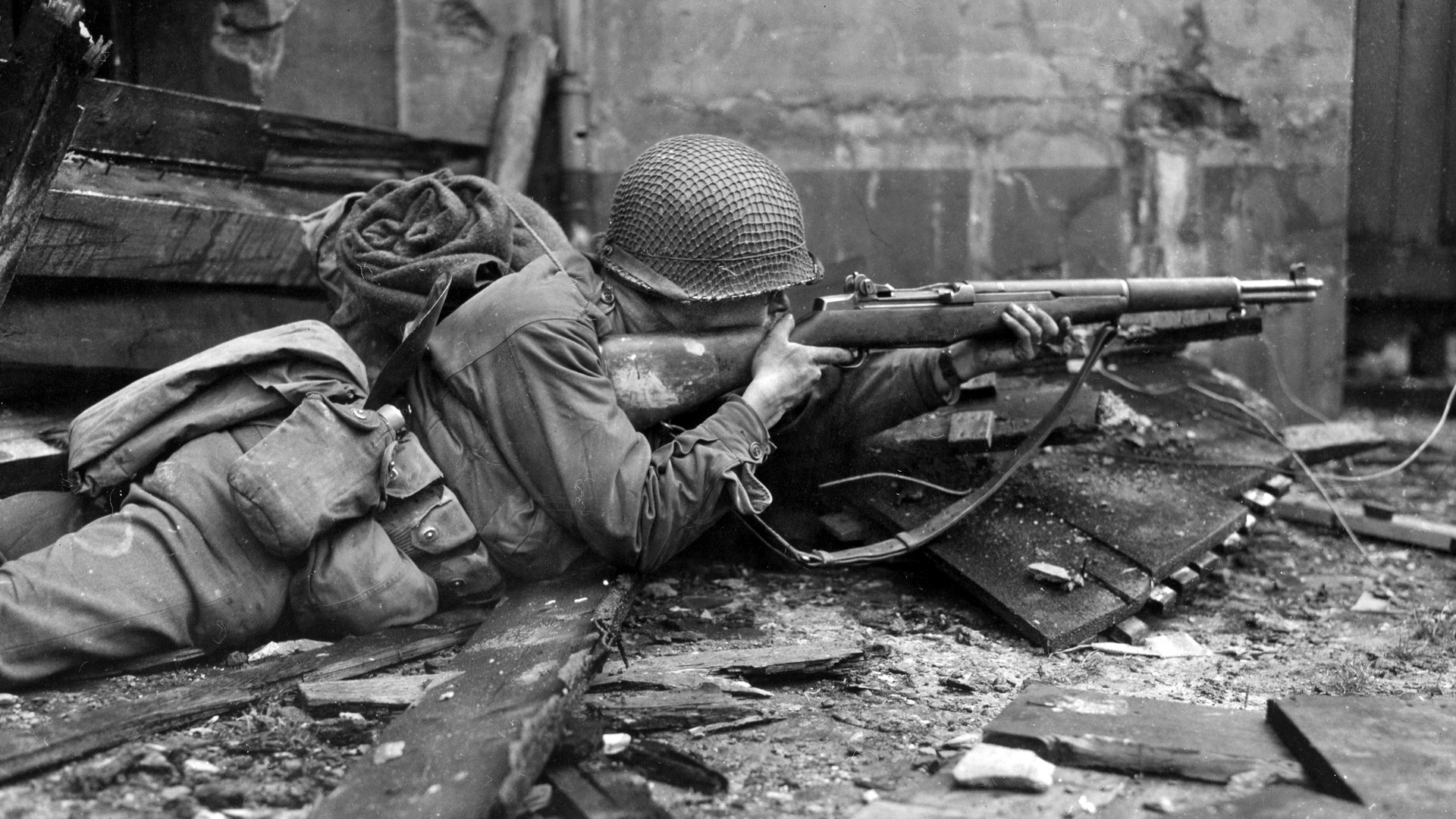
Alba Gu Brath!
It just goes to show everyone that it does not matter who or where the enemies of this sceptred isles are we can fall back on the fighting Scots